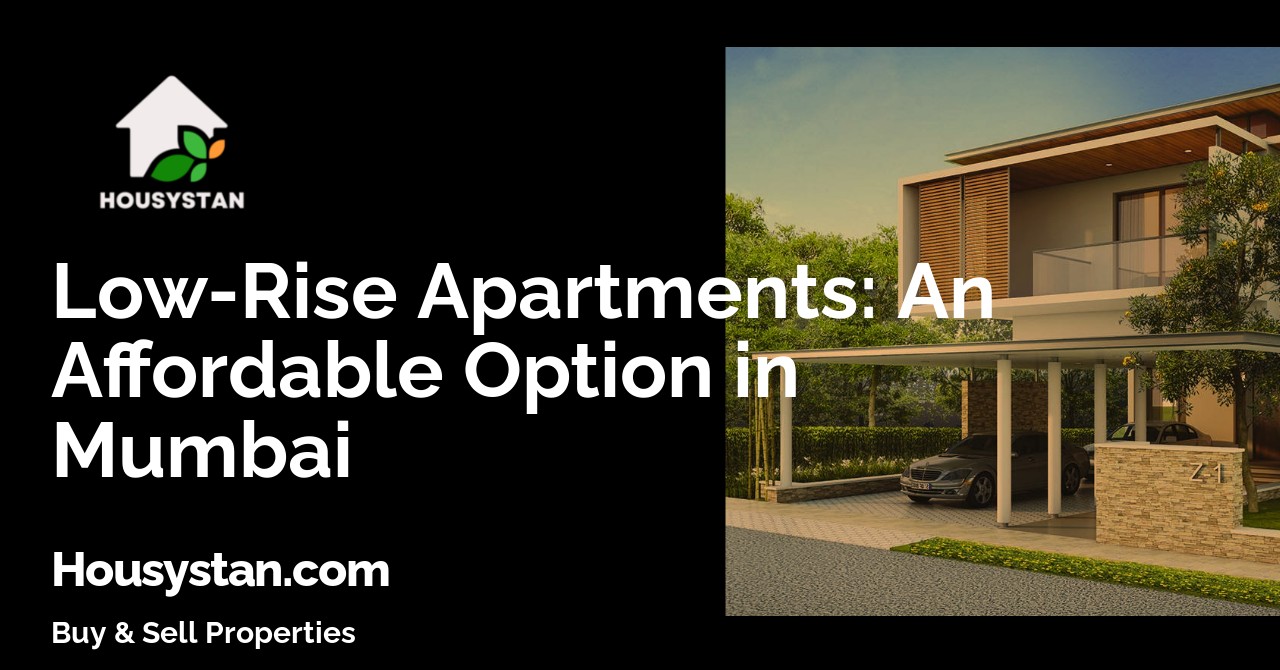Low-Rise Apartments: An Affordable Option in Mumbai
Read latest blogs and articles from Housystan

The Information mentioned here was last updated on:
4/12/2025Low-rise apartments present an excellent and affordable housing option for individuals and families seeking a comfortable lifestyle in Mumbai. As the city continues to expand, the demand for practical yet budget-friendly living spaces has increased, making low-rise residential complexes an attractive choice for many. These buildings, typically ranging from two to five stories, offer a unique blend of privacy, community, and convenience that sets them apart from high-rise towers common in Mumbai’s skyline.
One of the standout advantages of low-rise apartments in Mumbai is the sense of community fostered by fewer residents per building. Neighbors often develop closer relationships, creating a safer and friendlier environment for children and elders alike. Additionally, these apartments tend to have larger layouts, more open spaces, and ample natural light, enhancing the overall living experience.
For those concerned about affordability, low-rise apartments in Mumbai provide a cost-effective alternative to high-rise properties. Lower construction and maintenance costs are often passed on to buyers or renters, making these units more accessible to a wider range of income groups. Furthermore, many low-rise developments are strategically located in emerging neighborhoods such as Chembur, Mulund, Powai, and Kandivali, offering easy access to public transportation, reputed schools, hospitals, shopping centers, and recreational facilities.
- Verified Tenants/Buyers
- Unlimited Property Listing
- Zero subscription/charges fee
Low-rise apartments also offer the benefit of quicker evacuation and easier access during emergencies. With fewer floors, residents experience less crowding in elevators and stairwells, contributing to overall safety and convenience. Additionally, these properties are often surrounded by greenery, parks, and local markets, promoting a balanced urban lifestyle amidst Mumbai’s fast-paced environment.
Choosing a low-rise apartment in Mumbai means enjoying the perfect blend of affordability, tranquility, and connectivity. Whether you are a first-time homebuyer, a growing family, or a professional seeking a serene retreat within city limits, exploring low-rise housing options can provide the ideal solution. By selecting a low-rise property in Mumbai, you not only invest in a valuable asset but also secure a comfortable, harmonious living experience in one of India’s most dynamic cities.